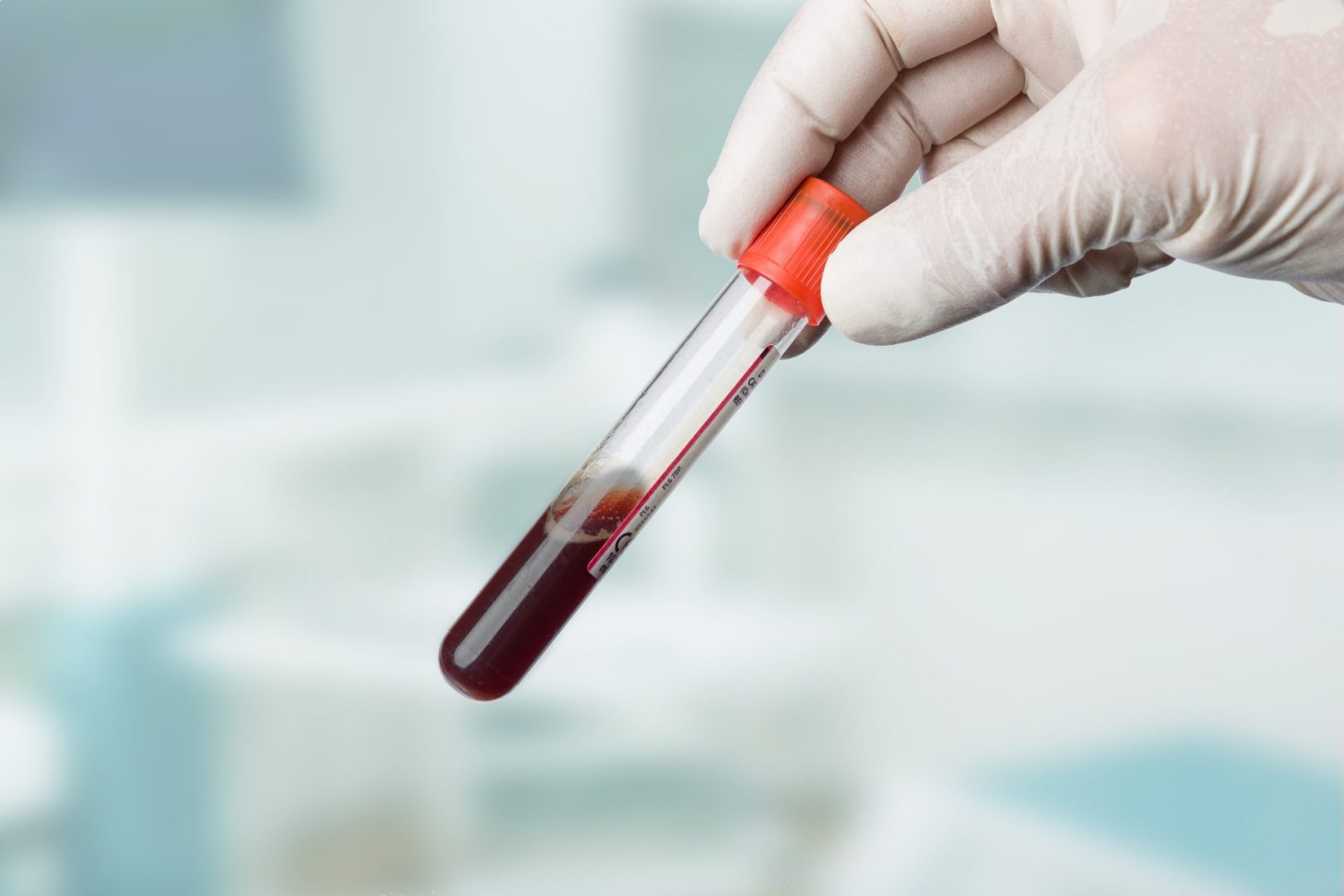Imagine walking into a doctor’s office and learning exactly how your body is aging with just a single drop of blood. No expensive scans, no lengthy evaluations, no complex questionnaires—just one simple test that reveals whether you’re aging faster or slower than your calendar age suggests and what that means for your future health and longevity.
This scenario is no longer science fiction. A revolutionary breakthrough in aging science has produced a blood test that can predict both how long you’ll live and how well you’ll age. This development represents a fundamental shift from treating aging as an inevitable decline to understanding it as a measurable, modifiable process that can be optimized for better outcomes.
The implications extend far beyond mere curiosity about lifespan. This test opens the door to personalized aging interventions, allowing people to make targeted lifestyle changes that could add years to their lives and life to their years. For the first time, individuals can receive objective feedback about how their daily choices are affecting their biological age and take concrete steps to improve their aging trajectory.
Understanding intrinsic capacity and biological aging
Biological aging differs dramatically from chronological aging, which simply counts the years since birth. While everyone ages at the same chronological rate, biological aging varies tremendously between individuals based on genetics, lifestyle choices, environmental exposures, and other factors that influence how cells and organs function over time.
Intrinsic capacity represents the sum total of a person’s physical and mental abilities at any given time. This comprehensive measure encompasses cognitive function, physical mobility, sensory abilities like vision and hearing, psychological wellbeing, and overall vitality. Unlike single health markers that provide limited information, intrinsic capacity offers a holistic picture of how well someone is aging.
Traditional methods for assessing intrinsic capacity required extensive testing, specialized equipment, and considerable time and expense. Patients might undergo cognitive assessments, physical performance tests, sensory evaluations, and psychological screenings to build a complete picture of their aging status. This complexity made comprehensive aging assessments impractical for routine healthcare.
The new blood test changes everything by condensing this comprehensive evaluation into a simple, affordable procedure that can be performed in any medical setting. By analyzing specific patterns in DNA methylation—chemical modifications that accumulate on genes over time—the test can predict intrinsic capacity with remarkable accuracy.
How DNA methylation reveals aging secrets
DNA methylation represents one of the most reliable biological clocks in the human body. As cells divide and age, they accumulate specific chemical modifications on their DNA that occur in predictable patterns. These modifications don’t change the genetic code itself but influence how genes are expressed, gradually altering cellular function over time.
The methylation patterns that accumulate with aging reflect the cumulative impact of all the factors that influence how fast someone ages. Chronic stress, poor nutrition, environmental toxins, lack of exercise, and inadequate sleep all leave their marks on the methylation landscape, creating signatures that reveal biological age with extraordinary precision.
By analyzing methylation patterns from a small blood or saliva sample, scientists can determine not just biological age but also predict future health outcomes with remarkable accuracy. The test essentially reads the molecular story written in our cells, revealing how past choices have influenced aging and predicting how current aging trajectories will affect future health.
This molecular approach to aging assessment provides objective, quantifiable data that removes guesswork from aging evaluation. Instead of relying on subjective assessments or single health markers, the test provides a comprehensive biological age score that reflects overall aging status.
The five pillars of healthy aging
The blood test evaluates intrinsic capacity across five critical domains that determine how well someone ages and functions throughout their lifespan. Each domain contributes essential information about overall aging status and future health prospects.
Cognitive function represents the brain’s ability to process information, make decisions, remember experiences, and adapt to new situations. Cognitive decline affects quality of life more than almost any other aspect of aging, making this domain particularly important for healthspan prediction. The test can detect early signs of cognitive aging before noticeable symptoms appear.
Physical mobility encompasses strength, balance, coordination, and endurance—the physical capabilities that determine independence and quality of life as people age. Declining mobility often represents the first step toward disability and loss of independence, making early detection and intervention crucial for maintaining function.
Sensory function includes vision and hearing abilities that connect people to their environment and enable safe, independent living. Sensory decline often occurs gradually, and people may not realize how much their abilities have diminished until significant impairment has occurred. Early detection allows for interventions that can preserve sensory function.
Psychological wellbeing reflects emotional health, stress resilience, and overall mental health status. Mental health significantly influences physical health outcomes and longevity, making psychological wellbeing an essential component of healthy aging. The test can identify people at risk for mood disorders and emotional difficulties.
Vitality represents overall energy levels, enthusiasm for life, and the capacity to engage meaningfully with activities and relationships. High vitality correlates strongly with longevity and life satisfaction, while declining vitality often predicts accelerated aging and increased mortality risk.
Remarkable findings about lifespan prediction
The blood test’s ability to predict lifespan has proven remarkably accurate in initial validation studies. People with high intrinsic capacity scores lived an average of 5.5 years longer than those with lower scores, demonstrating the test’s powerful predictive capabilities for longevity outcomes.
More importantly, the test predicts not just lifespan but healthspan—the years lived in good health without significant disability or disease. People with higher scores maintained better physical function, cognitive abilities, and overall health throughout their lifespans, experiencing what researchers call “compressed morbidity”—shorter periods of illness and disability before death.
The test also revealed that biological age can differ dramatically from chronological age. Some people in their seventies showed biological ages equivalent to healthy fifty-year-olds, while others in their forties displayed aging patterns typical of much older adults. These findings underscore the importance of focusing on biological rather than chronological age when assessing health and planning interventions.
Perhaps most encouraging, the test suggests that biological aging is modifiable. People who made positive lifestyle changes showed improvements in their intrinsic capacity scores over time, demonstrating that aging trajectories can be altered through appropriate interventions.
Dietary factors that influence aging
The blood test revealed specific dietary patterns associated with slower aging and higher intrinsic capacity scores. Understanding these relationships provides actionable guidance for people seeking to optimize their aging trajectory through nutritional choices.
Consumption of oily fish emerged as one of the strongest dietary predictors of healthy aging. Fish rich in omega-3 fatty acids—including salmon, mackerel, sardines, and anchovies—provide powerful anti-inflammatory compounds that protect brain function, support cardiovascular health, and maintain cellular integrity throughout the body.
Omega-3 fatty acids specifically support the aging process by reducing chronic inflammation, protecting cell membranes, supporting neurotransmitter function, and maintaining healthy blood flow. These effects translate directly into better cognitive function, improved mood, enhanced physical performance, and reduced disease risk.
Sugar intake showed the opposite relationship, with excessive consumption correlating strongly with accelerated aging and lower intrinsic capacity scores. High sugar intake promotes inflammation, insulin resistance, and cellular damage that accelerates aging across multiple organ systems.
The findings suggest that dietary quality matters more than specific eating patterns, with nutrient-dense whole foods supporting healthy aging while processed foods high in sugar, unhealthy fats, and artificial additives accelerating biological aging processes.
Lifestyle interventions for optimal aging
Armed with objective biological age data from the blood test, people can implement targeted interventions to slow aging and improve their healthspan. The most effective approaches address multiple aspects of aging simultaneously rather than focusing on single interventions.
Regular physical activity represents one of the most powerful anti-aging interventions available. Exercise stimulates cellular repair mechanisms, improves cardiovascular function, maintains muscle mass and bone density, supports cognitive function, and reduces chronic inflammation. The blood test can track how exercise interventions improve biological age over time.
Aerobic exercise improves cardiovascular health and supports brain function by increasing blood flow and promoting the growth of new brain cells. Resistance training maintains muscle mass and bone density while supporting metabolic health. Balance and flexibility exercises prevent falls and maintain mobility throughout the aging process.
Stress management becomes increasingly important as biological age increases, since chronic stress accelerates aging through multiple pathways. Effective stress reduction techniques include meditation, deep breathing exercises, yoga, tai chi, and other mind-body practices that activate the body’s relaxation response and reduce stress hormone levels.
Sleep optimization plays a crucial role in healthy aging, as quality sleep supports cellular repair, memory consolidation, and hormone regulation. The blood test can reveal how sleep improvements translate into better biological age scores, providing motivation for sleep hygiene interventions.
Cognitive and social engagement strategies
Maintaining cognitive function requires active engagement throughout the aging process. The blood test can track how cognitive interventions influence brain aging and overall intrinsic capacity scores, providing objective feedback about the effectiveness of different approaches.
Lifelong learning stimulates brain plasticity and builds cognitive reserve that protects against age-related decline. Taking classes, learning new skills, reading challenging material, and engaging in creative activities all contribute to maintaining cognitive function throughout the aging process.
Social connections profoundly influence aging outcomes, with strong relationships correlating with better health, longer lifespan, and higher quality of life. Social isolation accelerates aging and increases mortality risk, while meaningful relationships provide stress buffering and emotional support that promotes healthy aging.
Engaging in purposeful activities that provide meaning and satisfaction contributes to psychological wellbeing and overall vitality. Volunteering, mentoring, pursuing hobbies, and contributing to community activities all support healthy aging by maintaining engagement and purpose throughout life.
Personalized aging interventions
The blood test enables truly personalized approaches to aging optimization by providing objective baseline measurements and tracking progress over time. Instead of generic aging advice, people can receive targeted recommendations based on their specific biological age profile and intrinsic capacity scores.
For someone showing accelerated cognitive aging, interventions might focus on brain training exercises, omega-3 supplementation, meditation practices, and activities that challenge cognitive function. The test can track whether these interventions successfully slow cognitive aging over time.
People with declining physical function might benefit from targeted exercise programs, physical therapy, nutrition optimization, and balance training. Regular testing can reveal whether these interventions successfully improve physical aging markers and overall intrinsic capacity.
Those showing signs of accelerated overall aging might require comprehensive lifestyle overhauls addressing diet, exercise, stress management, sleep optimization, and social engagement simultaneously. The blood test provides objective feedback about which interventions produce the greatest improvements in biological age.
Future implications for healthcare
The availability of simple, affordable biological age testing could revolutionize healthcare by shifting focus from treating disease to optimizing aging. Instead of waiting for symptoms to appear, healthcare providers could identify accelerated aging early and implement preventive interventions to maintain health and function.
Insurance companies might eventually offer incentives for people who demonstrate healthy aging through blood test results, similar to current programs that reward healthy behaviors. This could create powerful economic incentives for aging optimization while reducing healthcare costs associated with age-related diseases.
The test could also guide timing for medical interventions, helping determine when someone might benefit from certain treatments or when they might be at higher risk for surgical procedures. Biological age might prove more relevant than chronological age for many medical decisions.
Employers might use biological age testing to design workplace wellness programs, retirement planning, and health benefits that account for individual aging trajectories rather than assumptions based on chronological age alone.
Hope for healthy longevity
Perhaps the most exciting aspect of this breakthrough is the hope it provides for everyone concerned about aging. Rather than viewing aging as an inevitable decline, the blood test reveals aging as a modifiable process that responds to positive lifestyle choices and targeted interventions.
The test democratizes access to aging assessment by making comprehensive evaluation affordable and accessible to everyone, not just those who can afford expensive anti-aging clinics and comprehensive testing panels. This could accelerate population-wide improvements in healthy aging as more people gain access to actionable aging information.
Most importantly, the test provides hope that people can take meaningful action to improve their aging trajectory regardless of their current age or health status. The ability to track biological age improvements over time creates powerful motivation for sustained lifestyle changes that support healthy longevity.
As this technology becomes more widely available, it promises to transform how we think about aging from a passive process to an active optimization opportunity. For the first time in human history, people can receive objective feedback about how well they’re aging and take concrete steps to age better, live longer, and maintain health and vitality throughout their extended lifespans.















